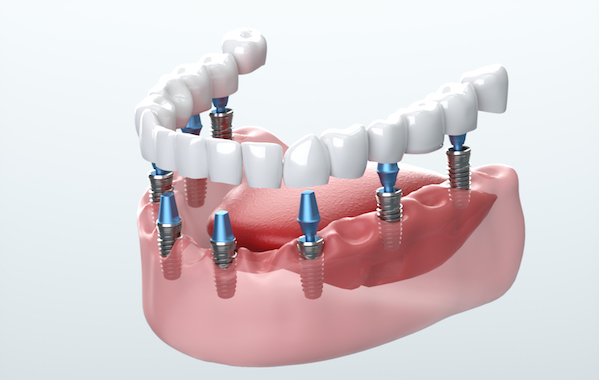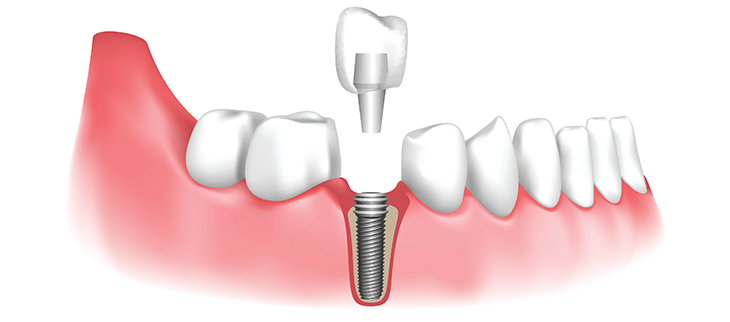Dental Center Condit OH Dental Implant Surgery: Procedure, Recovery, and What to Expect
Dental implants have revolutionized restorative dentistry, providing a reliable alternative to conventional methods for replacing missing teeth. The integration of dental implants with the jawbone is a posh biological have a peek at this site course of generally recognized as osseointegration. This course of not solely anchors the implant securely but also helps preserve jawbone check my blog health, stopping the bone loss usually associated with missing Smile Care Columbus OH teeth.
The dental implant itself is often made from titanium, a biocompatible materials that the physique accepts. When an implant is placed in the jaw, it's designed to closely mimic the foundation of a natural tooth, which is crucial for efficient integration. The titanium surface encourages the growth of bone cells, enabling the jawbone to bond with the implant over time.
Dental Clinic Condit OH Your Local Guide to Dental Implants

Several phases represent the osseointegration process. Initially, when the implant is surgically positioned into the jaw, a healing interval is required for the encompassing bone to start transforming. During this time, the bone grows across the implant, making a stable and stable basis. This healing time can differ, sometimes lasting several weeks to a few months, relying on various components, including the person's general health and the precise location of the implant.
The role of surrounding bone quality is essential. High-density bone sometimes offers a better setting for osseointegration in comparison with lower-density bone. Specialists typically consider the standard and amount of bone before the implant placement to find out the best course of action, which can contain bone grafting procedures in cases of insufficient bone quantity. Grafting enhances the possibilities of successful integration by making a extra sturdy base for the implant.
The organic mechanisms behind osseointegration involve numerous cellular activities. Osteoblasts, the cells answerable for bone formation, migrate to the implanted area and begin to lay down new bone materials. Simultaneously, the floor of the titanium implant undergoes changes that facilitate this bonding course of. Some newer implant designs incorporate floor modifications to further improve biological integration.
Dental Center Alexandria OH Your Local Guide to Dental Implants
Throughout the integration process, the position of blood supply cannot be overstated. An sufficient blood provide nourishes the bone and ensures the proper functioning of the cells involved in the healing and integration process. Improved blood circulate results in faster healing and better outcomes, which is why surgical strategies and aftercare usually prioritize maintaining or enhancing blood circulation to the positioning of the implant.
Improvements in surgical techniques additionally contribute significantly to the success rates of dental implants - Mono Dental Implants Galena OH. Minimally invasive strategies and guided implant surgery allow for more precise placement of implants, lowering trauma to the encompassing tissues and probably speeding up the therapeutic time. The much less trauma skilled by the jawbone can result in a extra favorable environment for osseointegration
Dental Care Associate Granville OH Dental Implant Services: Find the Best in Your Area

How a person maintains their oral hygiene after receiving an implant can significantly influence integration success. Proper care around the implant web site helps prevent infections, which can disrupt the therapeutic process. Regular dental check-ups are additionally very important to observe the health of each the implant and the encompassing gum and bone tissues.
Long-term success with dental implants is commonly linked to components similar to way of life decisions. Patients who smoke or have uncontrolled diabetes could experience lower rates of osseointegration. These conditions intrude with healing and blood supply, making it important for people contemplating implants to debate their health historical past with their dentist.
After the successful integration of the implant, the following section includes inserting the prosthetic restoration, corresponding to a crown. The final restoration must match comfortably and functionally integrate with the present dentition. Dental Care Associate Columbus OH. Proper alignment and occlusion play essential roles in how well the implant will carry out over time
Smile Care Galena OH Dental Implant Surgery: Procedure, Recovery, and What to Expect
Dental implants present a long-lasting solution that helps protect the integrity of the jawbone. When a tooth is lost, the bone that once anchored its root begins to deteriorate. Implants stimulate the bone similarly to natural teeth, triggering the jaw to maintain its density and power. This stimulation is crucial for stopping the sunken facial appearance that usually accompanies tooth loss.
In conclusion, the mixing of dental implants with the jawbone involves a complex interaction of biological and mechanical factors. Understanding the osseointegration course of can empower individuals to make knowledgeable decisions about their dental health. By appreciating the significance of choosing a skilled dental skilled and adhering to post-operative care, sufferers can obtain optimum outcomes and revel in restored function and aesthetics for a quantity of years to return.

- Dental implants mimic the structure of natural teeth and provide a stable foundation by integrating with the jawbone by way of a process referred to as osseointegration.
- The biocompatibility of titanium, generally used for dental implants, plays a vital function in promoting successful bonding with bone tissue.
- Osseointegration typically begins inside a few weeks post-surgery, with the implant surface steadily changing into enveloped by bone cells.
- The mechanical stability of implants is enhanced by their surface roughness, which encourages bone development and improves the integration course of.
- Immediate loading of implants may be feasible in sure instances, depending on bone density and the patient’s general dental health.
- Over time, the jawbone responds to the presence of an implant by present process transforming, contributing to the long-term success of the process.
- Factors corresponding to oral hygiene, smoking habits, and systemic medical conditions can significantly influence the combination strategy of dental implants.
- Regular follow-ups and imaging methods, corresponding to X-rays, can help monitor the success of osseointegration and detect potential problems early.
- The preservation of surrounding bone structure is enhanced by the stimulation supplied by dental implants, which can help prevent bone loss in adjacent areas.
- Successful integration not only restores functionality to the tooth but in addition contributes significantly to the aesthetics of the patient's smile and facial structure.undefinedWhat are dental implants and how do they work with the jawbone?undefinedDental implants are titanium posts surgically inserted into the jawbone to serve as artificial tooth roots. Once placed, they undergo a process called osseointegration, the place the jawbone naturally fuses with the implant, creating a secure basis for the replacement tooth.
How does osseointegration occur?undefinedOsseointegration is a biological course of where bone cells grow and attach to the floor of the dental implant. This sometimes takes a quantity of months, during which the implant turns into firmly anchored in the jawbone, guaranteeing power and stability for the artificial tooth.
Johnstown Dental Johnstown OH Dental Implant Services: Find the Best in Your Area
What factors affect the success of dental implant integration?undefinedKey elements embrace the quality and quantity of the jawbone, the patient's total health, and oral hygiene practices. Adequate bone density is crucial, as inadequate bone may impede successful integration.
Is the pain throughout dental implant placement significant?undefinedMost patients report minimal discomfort in the course of the procedure, as native anesthesia is used. Post-operative pain is usually manageable with over-the-counter pain relief medications, and most discomfort subsides inside a couple of days.
How long does the mixing process take?undefinedTypically, osseointegration takes about three to 6 months. However, this can differ primarily based on individual therapeutic processes and the particular conditions of the jawbone.
Can anybody get dental implants?undefinedMost individuals are candidates for dental implants; however, sure conditions such as uncontrolled diabetes or severe gum disease could affect eligibility. A thorough evaluation by a dental skilled is necessary to determine suitability.
Dental Care Granville OH Understanding Dental Implants: A Comprehensive Guide
What can be accomplished if there isn't sufficient jawbone for integration?undefinedIf there could be insufficient bone, procedures like bone grafting may be performed to enhance the jawbone. Once the graft heals, dental implants can then be placed, permitting for successful integration.
Are there long-term care issues after getting dental implants?undefinedYes, sustaining excellent oral hygiene is vital for the longevity of dental implants. Regular dental check-ups and cleanings additionally assist prevent problems and make sure the ongoing health of the surrounding bone and gum tissue.
Johnstown Dental Columbus OH Dental Implants: Options, Costs, and Care
How do dental implants evaluate to other tooth replacement options?undefinedDental implants are sometimes thought of superior to dentures and bridges because of their sturdiness, stability, and the preservation of jawbone health. Unlike other choices, implants fuse with the jawbone, which helps maintain bone density and facial structure.